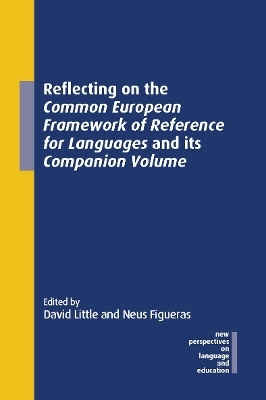
Reflecting on the Common European Framework of Reference for Languages and its Companion Volume
Multilingual Matters (Verlag)
978-1-80041-018-3 (ISBN)
The Common European Framework of Reference for Languages (CEFR) and its Companion Volume have established themselves as an indispensable reference point for all aspects of second and foreign language education. This book discusses the impact of the CEFR on curricula, teaching/learning and assessment in a wide range of educational contexts, identifies challenges posed by the Companion Volume and sheds light on areas that require further research and development. Particular attention is paid to three features of the two documents: their action-oriented approach, their focus on plurilingualism, and the potential of their scales and descriptors to support the alignment of curricula, teaching/learning and assessment. The book suggests a way forward for future engagement with the CEFR, taking account of new developments in applied linguistics and related disciplines.
David Little is a Fellow Emeritus of Trinity College Dublin, Ireland. He has been a regular contributor to the Council of Europe’s language education projects since the 1980s. In 2010, the National University of Ireland awarded him an honorary doctorate in recognition of his contribution to language education in Ireland and further afield. Neus Figueras coordinated the development of foreign language curricula and certificate examinations for adult language learners in the Catalan ministry of education in Spain for over 20 years. She has been involved in international projects and collaborated with the Council of Europe in the dissemination of the CEFR. She was one of the authors of the Manual for Relating Examinations to the CEFR (Council of Europe, 2009).
Acknowledgements
Contributors
David Little and Neus Figueras: Introduction
Part 1: The Common European Framework of Reference for Languages: Past, Present and Future
David Little: Introduction
Chapter 1. Masashi Negishi: The Impact of The CEFR in Japan
Chapter 2. Margaret E. Malone: ACTFL and CEFR: Relationships, Influences and Looking Forward
Chapter 3. Brian North: The CEFR Companion Volume Project: What Has Been Achieved
Part 2: The Action-oriented Approach: A Change of Paradigm?
David Little: Introduction
Chapter 4. John H.A.L. de Jong: The Action-oriented Approach and Language Testing: A Critical View
Chapter 5. Mark Levy and Neus Figueras: The Action-Oriented Approach in The CEFR and The CEFR Companion Volume: A Change of Paradigm(s)? A Case Study from Spain
Chapter 6. Constant Leung: Action-oriented Plurilingual Mediation: A Search for Fluid Foundations
Part 3: Plurilingualism, Plurilingual Education and Mediation
David Little: Introduction
Chapter 7. Bessie Dendrinos: A Data-driven Curriculum with Mediation Descriptors for Plurilingual Education
Chapter 8. Peter Lenz: Some Thoughts about the Testing of Mediation
Chapter 9. Déirdre Kirwan and David Little: Implementing Plurilingual Education: The Experience of an Irish Primary School
Part 4: Descriptors, Scales and Constructive Alignment
David Little: Introduction
Chapter 10. Armin Berger: Refining the Vertical Axis of the CEFR for Classroom Purposes: Local Reference Points
Chapter 11. Elaine Boyd: Commonality versus Localization in Curricula
Chapter 12. Elif Kantarcıoğlu: The CEFR Companion Volume and Mediation: An Assessment Perspective
Part 5: Afterword
Chapter 13. Barry O’Sullivan: Making the CEFR Work: Considerations for a Future Roadmap
Index
| Erscheinungsdatum | 09.03.2022 |
|---|---|
| Reihe/Serie | New Perspectives on Language and Education |
| Sprache | englisch |
| Maße | 156 x 234 mm |
| Gewicht | 320 g |
| Themenwelt | Geisteswissenschaften ► Sprach- / Literaturwissenschaft ► Sprachwissenschaft |
| Sozialwissenschaften ► Pädagogik | |
| ISBN-10 | 1-80041-018-2 / 1800410182 |
| ISBN-13 | 978-1-80041-018-3 / 9781800410183 |
| Zustand | Neuware |
| Haben Sie eine Frage zum Produkt? |
aus dem Bereich


